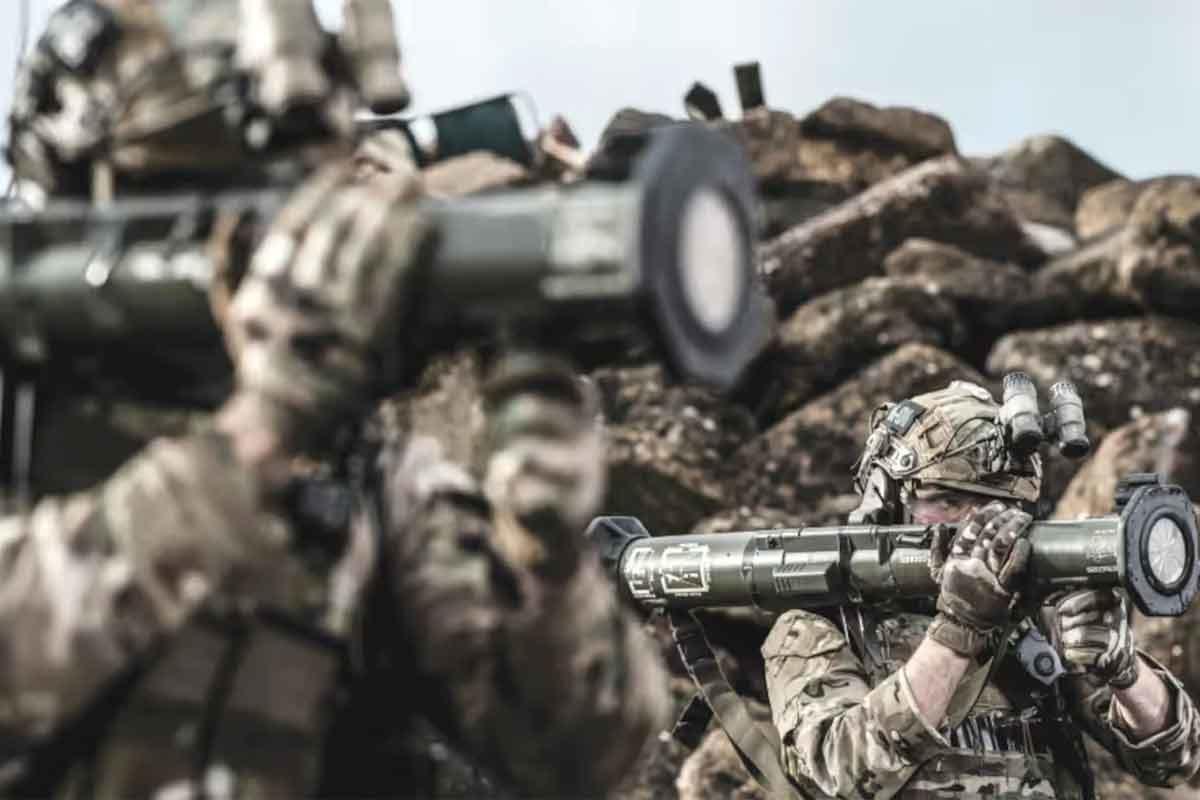

Soldiers will soon train on fewer systems and haul less gear downrange thanks to the Army’s adoption of an advanced new shoulder-launched munition.
The service awarded a $494 million contract to Swedish defense contractor Saab in late August to furnish soldiers with the XM919 Individual Assault Munition, a single-shot multi-mission round that’s designed to combine the capabilities of the M72 Light Anti-Armor Weapon, M136 AT-4, and M141 Bunker Defeat Munition into a single weapon system.
The new shoulder-fired round is based on Saab’s AT-4 Confined Space Tandem Warhead, which itself is based on the 84mm AT-4 that’s been in service with the U.S. military since the mid-1980s. It is “specifically designed to combine the force of the tandem warhead with the ability to fire in narrow positions or other confined spaces without harm to the operator or nearby individuals,” according to the company.
Read Next: 2 Virginia Guardsmen Are Running a Rural Anti-Government Militia
According to the Army’s fiscal 2025 budget request, the goal of adopting the XM919 IAM is to eliminate the “mission risk associated with having to choose” between multiple shoulder-launched munitions in a combat setting and reduce the burden on soldiers associated with training on different systems and then hauling them around in combat.
In practice, that means multiple effects packed into a single warhead: The XM919 IAM “supports the close fight in urban and complex terrain, allowing soldiers a fire-from-enclosure (FFE) capability to defeat field expedient structures such as earth and timber bunkers, reinforced concrete, adobe and triple brick walls with behind-the-wall lethality effects, as well as defeating light armored vehicles,” according to the budget documents.
“The XM919 IAM will provide our soldiers with a lethal and lightweight munition that is capable of neutralizing multiple target types in a single weapon system,” Maj. Gen. John Reim, the program executive officer for the Army’s Joint Program Executive Office, Armaments and Ammunition, told Military.com in a statement. “This new shoulder-launched munition will reduce the training burden of multiple shoulder-launched munitions, lessen the combat load of the warfighter, and ease the logistics demand by maintaining only one shoulder-launched munition in inventory.”
While both the Army and Saab have billed the new XM919 as essential to reducing soldiers’ combat loads, it’s worth noting that the system is, in fact, heavier than those it’s replacing. The AT-4 Confined Space Tandem Warhead weighs just under 20 pounds, in line with the service’s requirements, according to the company’s spec sheet — more than other 14- to 18-pound systems in the AT-4 family, as well as the 5.5-pound M72 LAW and the 15.8-pound M141 BDM.
The ostensible combat load reduction doesn’t stem from the weight of a single XM919, but the fact that soldiers will now carry a single shoulder-launched system rather than multiple ones to achieve the same effect, retired Marine Col. Mark Cancian, a senior adviser at the Center for Strategic and International Studies, told Military.com
“The weight has been going up and the capability has been going up, but the availability is going down,” Cancian explained. “As the system gets more and more expensive, you’re simply not going to have as many. That doesn’t mean that they’ll be scarce, but instead of giving two people in a squad an M72, now maybe the squad gets just one [XM919], but it’s far more capable.”
The Defense Department has been focused on reducing troops’ combat loads for the better part of the last decade as the U.S. national security apparatus reorients from two decades of counterinsurgency operations in the Middle East to “great power competition” against adversaries such as Russia and China.
“Surveys from recent wars have found dismounted ground combat troops carrying 90 to 140 pounds or more in combat,” according to a 2018 report from the Center for a New American Security think tank in Washington, D.C. “Heavy loads reduce mobility, increase fatigue, and reduce mission performance.”
The Army is aiming to begin fielding the XM919 IAM to close-combat troops as soon as 2025, according to the service.
Related: Marine Corps Wants Rifle-Mounted Jammers, ‘Buckshot-Like’ Ammo to Help Grunts Counter Drones
